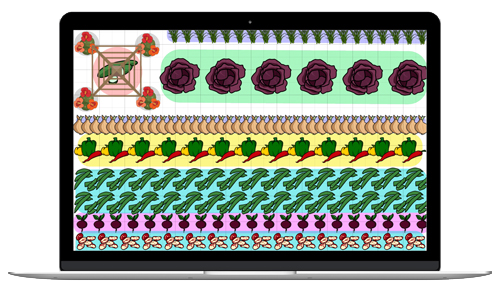
Rhododendrons are popular among gardeners with their evergreen shrubbery and early blooms.
Planting, Growing, and Pruning Rhododendrons and Azaleas
The Almanac Garden Planner - Use It Free for 7 Days!
Plan your 2025 garden with our award-winning Garden Planner.
There are more than 900 species in the Rhododendron genus, which vary greatly. It would take a whole book to understand this wide world!
You may be interested in joining the American Rhododendron Society, which runs a database with information on more than 2,000 rhododendrons and azaleas. On an annual basis, the society selects a number of rhododendrons to be awarded the Rhododendron of the Year designation, highlighting the best-performing plants for different regions.
Here is a handful of varieties that we think you’ll enjoy:
- ‘Blue Diamond’ is a dwarf evergreen rhododendron that grows to 3 feet. It blooms mid-season with violet-blue flowers. Zones 7 to 9.
- ‘Cecile’ is a vigorous azalea that grows to 7 feet and produces dark salmon-pink buds in mid-season. Zones 5 to 8.
- ‘Hydon Dawn’ is a low-growing rhododendron that actually tolerates full sun. Pale pink flowers bloom in mid-season. Zones 7 to 9.
- ‘Nova Zembla’ is an evergreen rhododendron that grows 5 to 10 feet tall and bears bright red flowers in late midseason. Zones 5 to 8.
- ‘Rosy Lights’ is an azalea that offers extra cold hardiness. It grows to 6 feet and bears deep purple-pink flowers. Zones 3 to 8.
- ‘Purple Gem’ is a dwarf rhododendron that grows to 2 feet and is an early-season bloomer. It bears small, light purple flowers. Excellent in front of a border or in a rock garden. Zones 5 to 8.
ADVERTISEMENT
I don't have a question at the moment but wanted to thank you for your site and the thorough information you provide (and of course, the gorgeous pictures).
I am very interested in herbal teas and Labrador Tea (from the rhododendron bush) is one of them. A friend asked me to find out the best information possible on growing rhododendron so that she can harvest her own leaves. I came upon this gem and have forwarded her the link. I will certainly be back often. Thanks again!
If it doesn’t seem root-bound or stressed, you can leave it in the pot until spring, but keep it outside in a protected area (like up against the house) and put a thick layer of much around its crown. The main thing is to let it experience the cold so it goes fully dormant.
I have azalea plant in the pot it came in. I've had it since February. I am moving to NH and want to plant it there. Should I keep in pot till spring or can I plant in mid November? Plant has special meaning. Thank you
This May of 2016 I planted 1-Rhododendron and 3 Blackeyed Susans. The Blackeyed Susans are in front of the Rhododendron. The Rhododendron stopped flowering by July and the petals dried up. Then the Blackeyed Susans started to flower,grew both in height and width, and now block out the Rhododendron. Since this is the first year for the plants, how do I prune,thin or cut back both plants to get ready for next year growing season. Also,should I fertilize them now and what type of fertilizer
Hi Bob,
Don’t prune the rhodie; it needs to get established. As for the black-eyed Susans, they are perennials and should be cut back to the ground when they die off for the season (typically late fall). Ultimately, the shrub will outsize the perennials and you will have a nice underplanting. The fertilizing season is winding down so don’t worry about that until spring. Look for slow-release granular fertilizers formulated for rhododendrons.
Can you prune the azaleas all the way back?
Azaleas look best when pruned consistently and minimally every day (removing dead limbs). However, if your azalea is overgrown, yes, you can prune azaleas down to about 1 foot in height.
I have had three rhododendrons on the side of my house for around 17 years. They have thrived however this year the leaves turned brown on one of them, while the other two still look good. We were concerned it had died but recently it has had some new green leaves on the bottom branches of the plant. Any thoughts on what could have caused this and what we can do to help it come back?
Hi, Kathryn, “Rhodos” are pretty resilient but occasionally they get sick. The wilt or browning that you describe could be caused by several things, such as poor drainage (is this plant more vulnerable to pooling water than the others?), summer drought (oddly enough, too little water is about as damaging as too much), accumulated fertilizer that did not wash into the soil (see poor drainage above), being planted too deep (on the face of it this may not sound like your plant…but if water runoff or the like has carried soil/silt or mulch to the plant and that built up on the roots, it is as if the plant is buried too deeply; the roots should be near the surface of the soil/ground)
It sounds like your rhodo is in recovery, Perhaps you can help it along by checking on these points.
Thanks for asking! Hope this helps—












